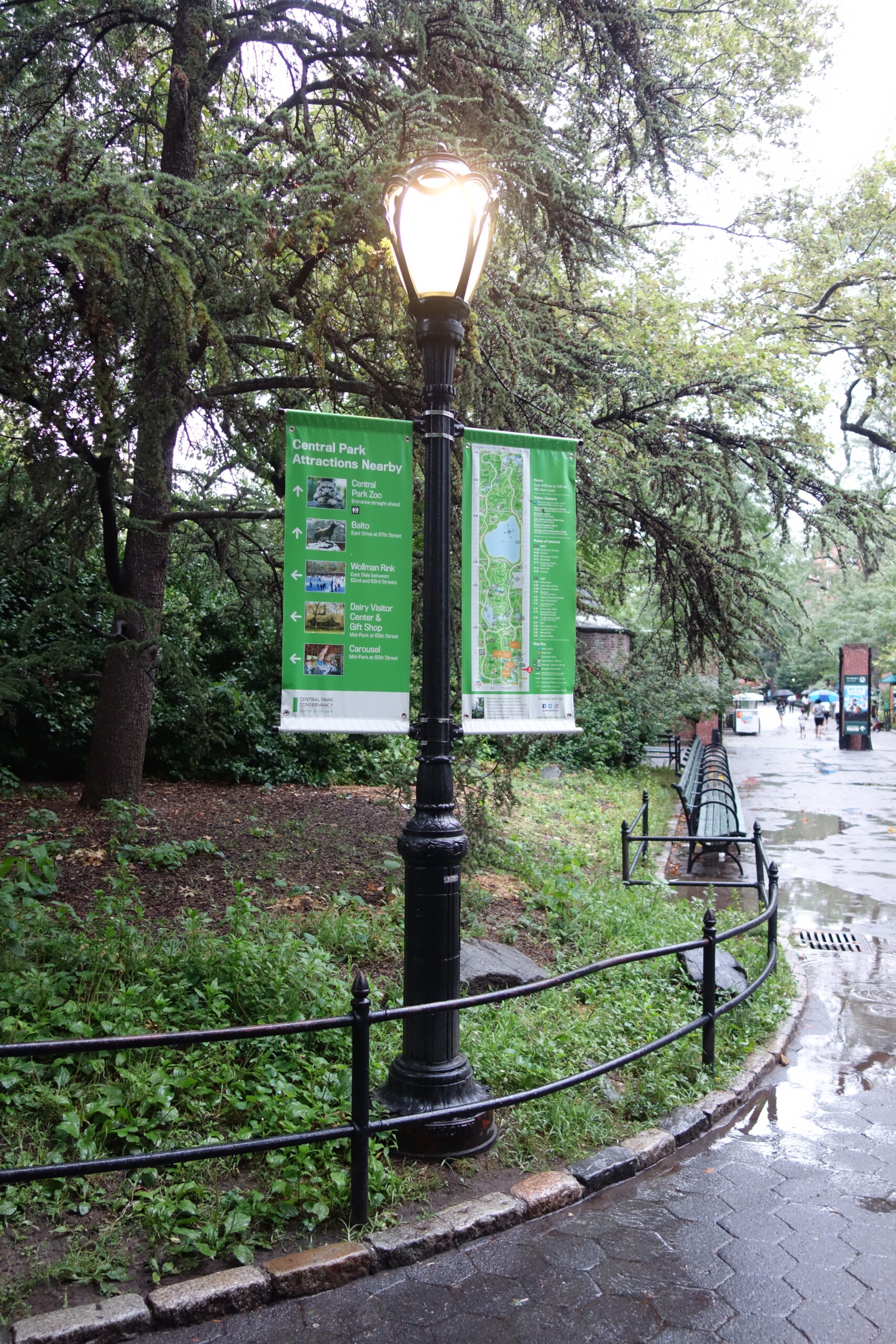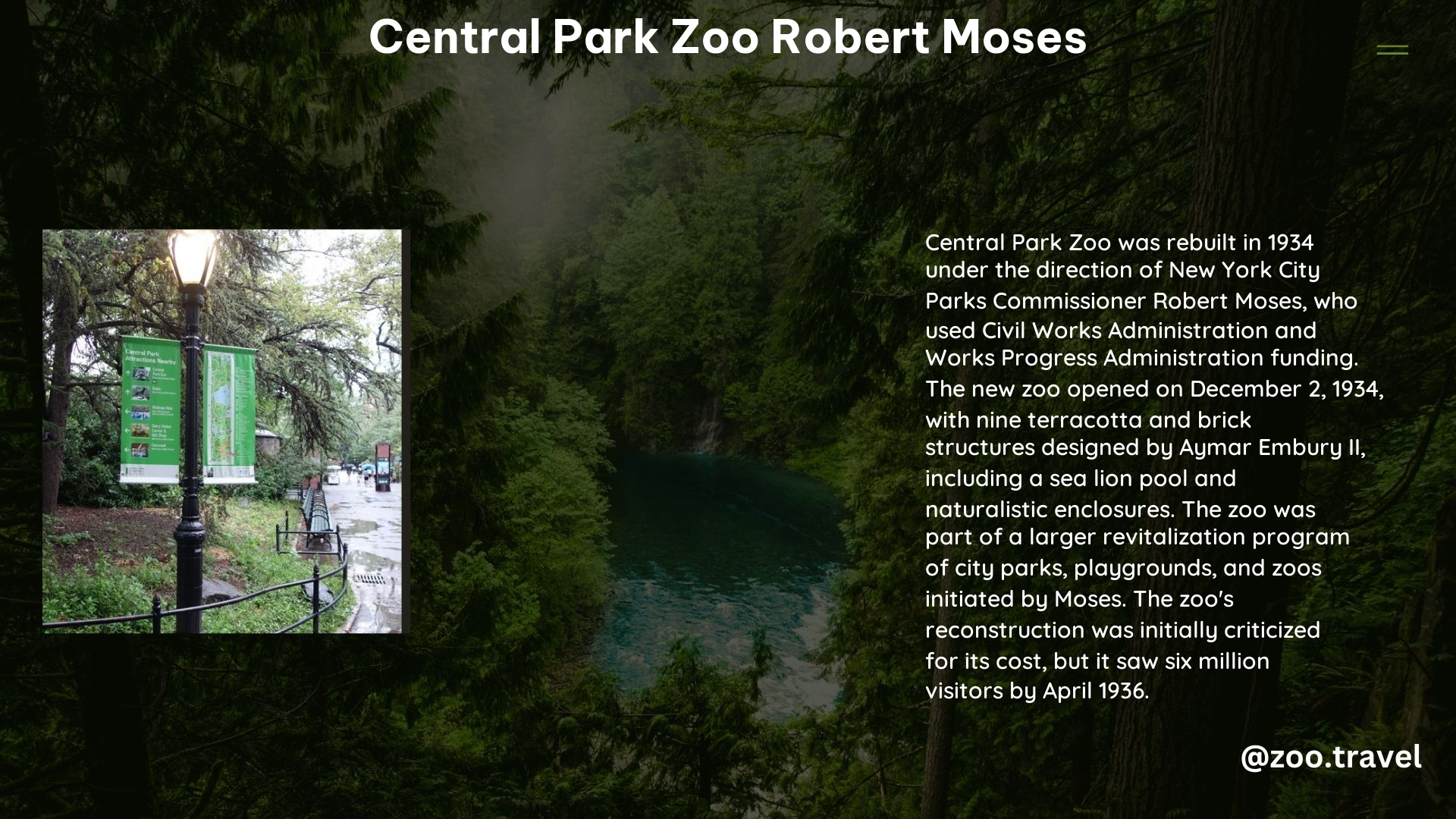Robert Moses, the renowned urban planner and public works commissioner, played a pivotal role in the renovation and transformation of the Central Park Zoo in the 1930s. His vision and efforts transformed the zoo into a modern, humane, and educational facility that became a beloved destination for millions of visitors.
What Role Did Robert Moses Play in the Renovation of the Central Park Zoo?

Robert Moses, the New York City Parks Commissioner, recognized the need to renovate the Central Park Zoo’s menagerie in the 1930s due to its deteriorating conditions. He believed that the city needed a modern zoo that could provide better living conditions for the animals and a more enjoyable experience for visitors.
To achieve this goal, Moses acquired funding from the Civil Works Administration and the Works Progress Administration to construct the new zoo. The design was prepared by Aymar Embury II in just 16 days and included nine terracotta and brick structures, a sea lion pool, and a comfort station.
The construction of the new zoo began in 1934 and was completed in eight months. The zoo reopened on December 2, 1934, with a ceremony attended by former governor Al Smith, marking the successful completion of Moses’ renovation efforts.
How Did Robert Moses’ Efforts Impact the Living Conditions of Animals at the Central Park Zoo?

Robert Moses’ renovation efforts significantly improved the living conditions of the animals at the Central Park Zoo. The new zoo featured naturalistic environments and larger enclosures, providing a more humane and comfortable space for the animals.
Moses emphasized the importance of housing only healthy animals in more humane conditions, which led to better care and welfare for the animals. This focus on animal health and welfare was a significant departure from the previous conditions at the zoo.
What Were Robert Moses’ Goals for the Central Park Zoo in Terms of Its Design and Functionality?
Robert Moses’ vision for the Central Park Zoo was to create a modern, naturalistic, and educational facility that would provide a better experience for both the animals and the visitors.
The design of the new zoo focused on creating naturalistic environments that would mimic the animals’ natural habitats. This approach not only provided better living conditions for the animals but also offered a more immersive and engaging experience for the visitors.
In addition to the naturalistic environments, Moses also emphasized the importance of accessibility and education. The zoo was designed with features like a comfort station and a restaurant overlooking the sea lion pool, which facilitated visitor engagement and learning about the animals.
Additional Details
- The renovation of the Central Park Zoo cost $411,000 and was completed in eight months.
- The renovated zoo attracted six million visitors by April 1936, demonstrating its popularity and success.
- Robert Moses’ efforts transformed the Central Park Zoo into a modern and humane facility, setting a new standard for zoos in the United States.
References
- https://en.wikipedia.org/wiki/Central_Park_Zoo
- https://www.centralpark.com/things-to-do/central-park-zoo
- https://www.tclf.org/landscapes/central-park-zoo
- https://aboutzoos.info/zoos/zoo-database/rest-of-the-world-zoo-database/132-central-park-zoo-new-york-city
- https://www.nycgovparks.org/about/history/zoos/central-park-zoo
